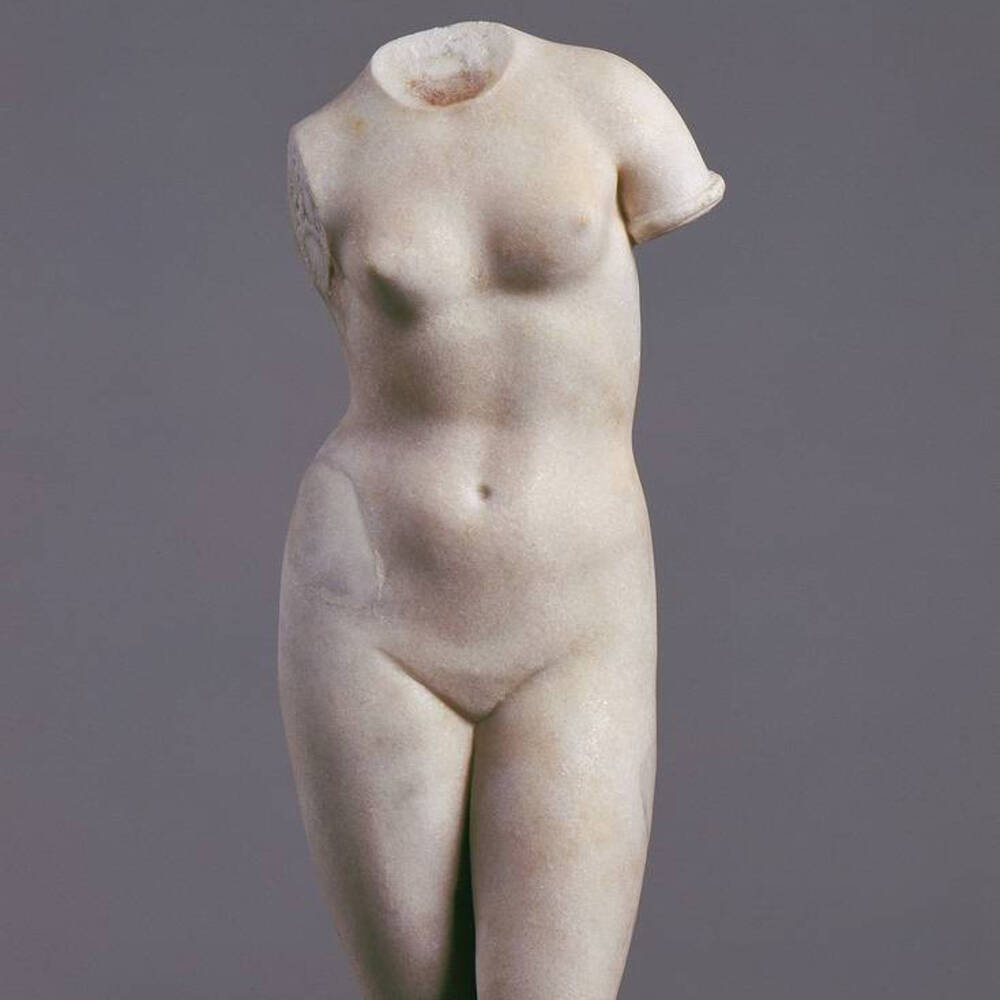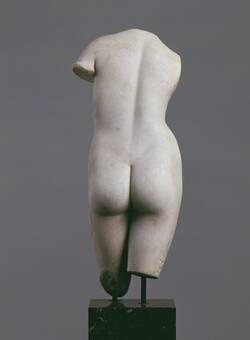The statue known as Aphrodite of Knidos was so popular in the ancient world that it was also reproduced on a smaller scale. The sculptor of the Dresden statuette has reduced the size of the original by more than half and used the most expensive marble that was available at the time, the type quarried on the island of Paros. When complete, the Dresden Knidian Aphrodite must have been one of the best cabinet pieces of antique sculpture.
Further Media





If classical antiquity had anything like the Mona Lisa, it would have been the Aphrodite of Knidos by Praxiteles. Even nearly 500 years later, such was this Aphrodite’s fame that Roman Emperor Hadrian had a replica of the entire Temple of Knidos complete with the statue built in his palace garden.
Pliny the Elder, the Roman polymath and natural philosopher, even described the statue as the world’s most important artwork. At that time, just to see the statue, some people even travelled to Knidos, a little harbour town in the south-east of the Aegean. Since the Temple was open on all sides, the statue of Aphrodite could be admired from every angle – at least, during the day, since the shrine was closed at night. According to legend, a young man fell so passionately in love with the statue, he hid himself so he could spend the night with his beloved Aphrodite. In Pliny’s account of the event, half-mad from passion, the young man tried to make love to the statue, leaving a wet patch on her backside – a story told to tourists to explain some slight discolouring in the marble.
But many other stories praised the beauty of the Aphrodite of Knidos. In one anecdote, for example, the goddess herself is said to have visited the Temple. Looking at her statue, she wondered, “Wherever did Praxiteles see me naked?”
Before our statuette joined the Dresden collection, it was owned by Cardinal Flavio Chigi, and kept in his collection of antiquities.
Today, the fundamental principle of restoration is to conserve art works as they are. In those days, though, restoring valuable statues by adding the missing parts was thought to bring the works back to life. Much later in 1893, this Aphrodite was ‘de-restored’ – separating the modern additions from the original antique torso. Since then, the additions removed – the head, arms, and legs, along with a seventeenth century plinth – have all been kept in the museum’s storage facility.
Many pieces in our collection have a similar story to tell. Chigi originally kept his collection of sculptures in a luxurious family palazzo in Rome designed by Bernini, the renowned sculptor and architect. Later, this magnificent residence was to become a popular meeting point for artists in the city. The Chigi family had excellent connections to the Polish royal house – so much so that for a few years the former Polish king’s widow lived in the Chigi palazzo, together with her retinue.
In 1728, after Flavio Chigi’s death, his son sold much of the family art collection to the new Polish king, August the Strong. The sale was arranged through Baron Leplat, a shrewd intermediary and head of the royal collection. The acquisition may have cost August the Strong a fortune, but it was well worth it – today, those sculptures form the core of Dresden’s collection of antiquities.
- Location & Dating
- 2nd century CE
- Material & Technique
- Parian marble
- Dimenions
- H: 52,5 cm, B: 21,5 cm, T: 17,0 cm Sockel: H: 15,8 cm, B: 17,0 cm, T: 16,0 cm Gesamt: H: 71,0 cm, B: 21,5 cm, T: 17,0 cm Geschätztes Gewicht: 45,0 kg Abstand der Brustwarzen 10,5 cm; Abstand Nabel - linke Brustwarze 13,7 cm; Abstand Nabel - rechte Brustwarze 12 cm
- Museum
- Skulpturensammlung
- Inventory number
- Hm 139